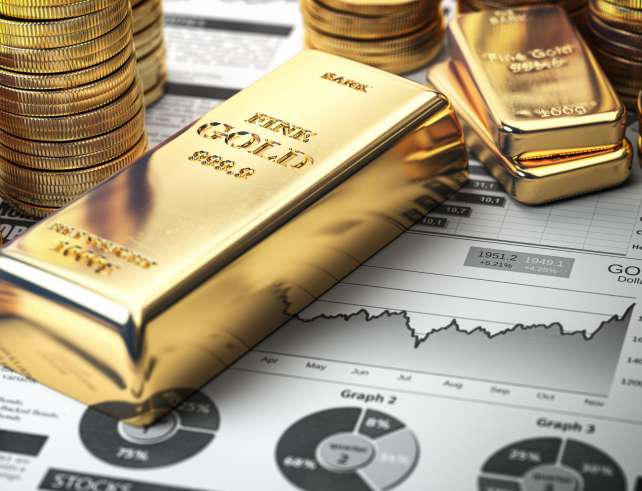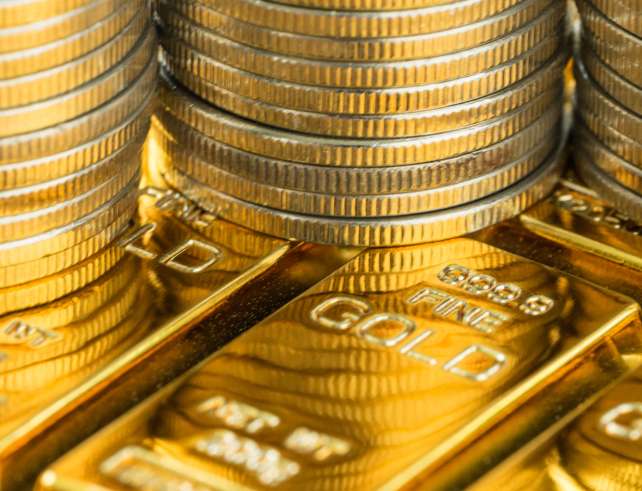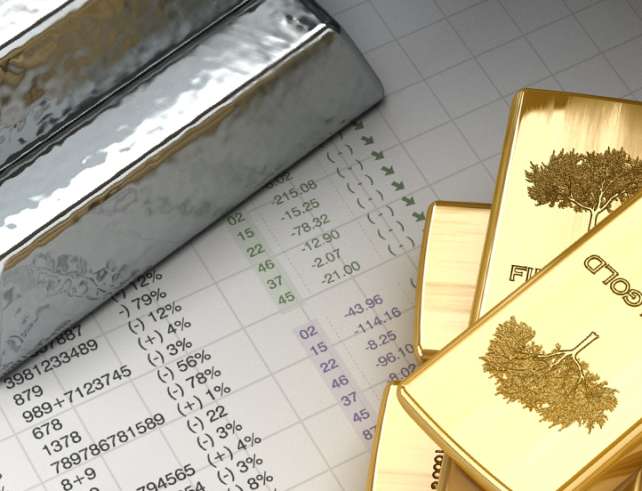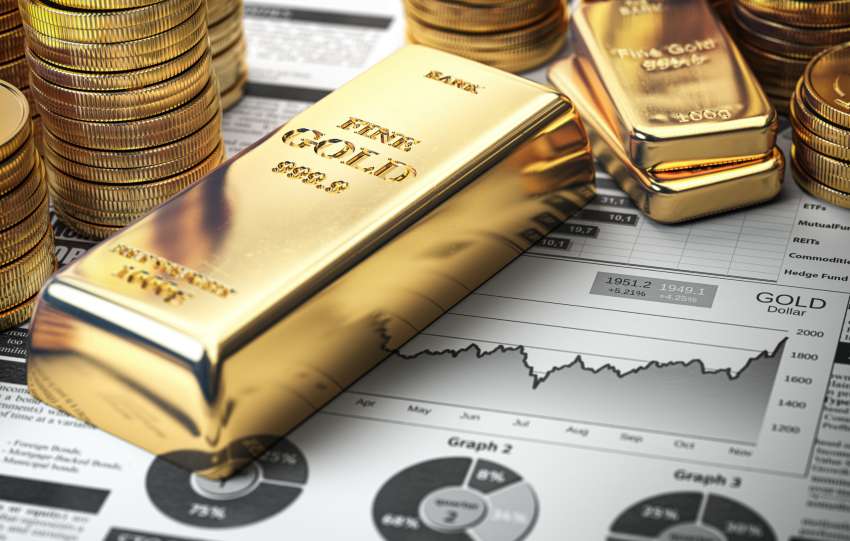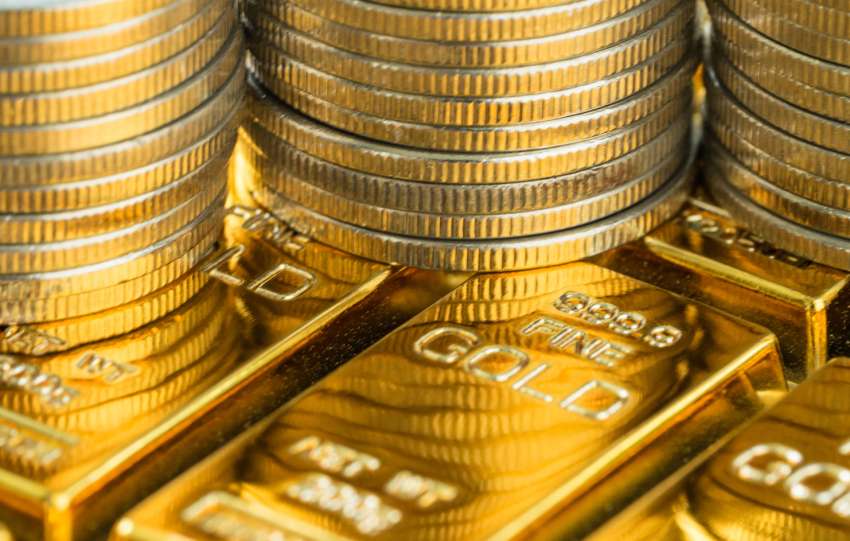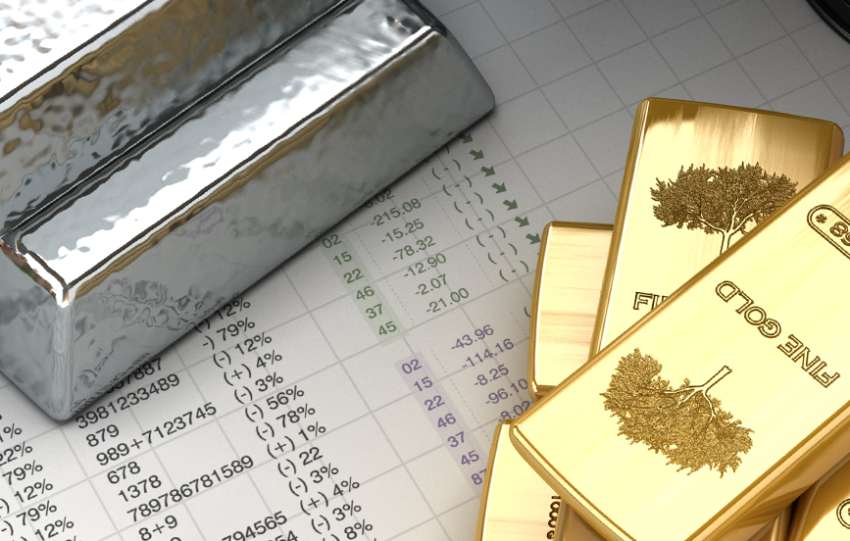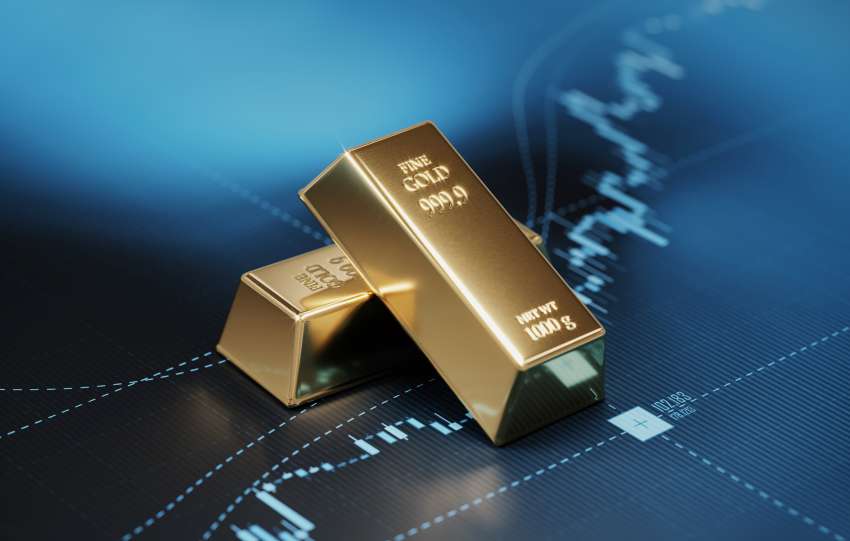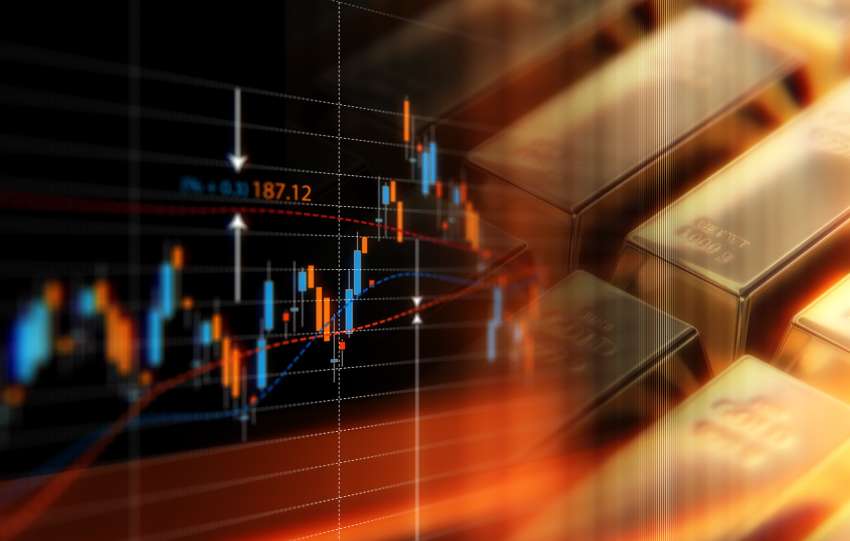There are many reasons people choose to invest in gold. Maybe they’re hoping to play the market and get a quick return, or they could intend on making the precious metal their retirement plan. Regardless of the underlying cause, they all want the same thing: the price of gold to rise.
If buying when gold prices will soon rise is the right move, why don’t more people go this route? To start, there’s simply no foolproof way to predict how the value of gold will increase or drop. Anyone who could accomplish this feat could reach billionaire status in a matter of weeks.
Of course, predicting gold prices also isn’t just a shot in the dark. A variety of economic factors directly affect the price of gold and where it’s heading. And fortunately for those hoping to invest in this precious metal, you can monitor all these aspects with a few public charts.
1. Inflation Rates and Gold Prices
Inflation rates are one of the biggest considerations investors have with predicting the price of gold. This is because most people view the precious metal as a hedge against inflation and a poor economy. Paper money can become worthless, but gold will always have value.
Because of this, it’s important to monitor inflation rate charts and stay abreast of news related to this economic factor. As inflation rises, the price of gold typically goes up as well since people will try to protect their financial well-being. Just look at some of the historical evidence:
- When inflation rose from 3.4 percent to 8.7 percent between 1972 and 1973, the price of gold increased from $63 to $106 per ounce.
- Inflation rose from 9 percent to over 13 percent between 1978 and 1979. During that time, the price of gold jumped from $226 to $512.
- The early 1980s saw inflation rates of nearly 15 percent. Gold hit a record $666.75 an ounce — a fifteenfold increase over the prior decade.
- The inflation rate quadrupled between 1986 and 1987. During this time, the price of gold per ounce increased by over 20 percent.
- In mid-2021, inflation reached its highest point in 13 years. The gold price approached $2,000 per ounce during this time.
These historic rises in the value of gold are difficult to ignore. Governmental and central bank actions can change the direction of inflation and the economy, but inflation isn’t always the easiest thing to control. If the charts show a consistent rise, people are likely to flock to gold.
2. Good Old-Fashioned Gold Charts
Charts that follow inflation rates are a great way to predict the gold price. Of course, that along with other major economic factors can become complex to understand. This is why many people love the comfort of a good, old-fashioned live gold spot price chart.
There’s nothing incredibly groundbreaking about these charts. A rising line representing the precious metal’s price can turn into a downward trend in a moment’s notice. Of course, you can still get an idea of short-term price movements by looking at this basic data.
Additionally, you can view gold prices through the lens of history. Gold charts have dates listed at the bottom, and if you notice significant movements in the price, you can always check out what was going on in the world during that time. Consider these events:
- September 2008: Gold prices climbed when the Lehman Brothers declared bankruptcy — putting the enormity of the impending financial crisis in focus.
- December 2011: Gold skyrockets to new highs as investors fear the economic fallout of rising tensions in the Middle East.
- July 2015: Gold prices drop after SGE and COMEX see 4.7 tonnes of gold sold off.
- December 2016: Gold prices drop as a drive toward demonetization reaches India — a major consumer of gold.
- 2020-2021: Gold sees massive gains as the COVID-19 pandemic wreaks havoc on economic stability around the world.
While a quick look at charts monitoring the price of gold may not tell you much, an in-depth analysis can prove invaluable. If you notice certain trends occurring in the past, there’s a good chance you can expect history to repeat itself.
3. Bitcoin Value and Gold Prices
Did you know Bitcoin has earned itself the nickname “digital bullion”? Interestingly enough, the cryptocurrency’s connection to gold doesn’t end with a simple metaphor. Those who fear currency debasement and inflation view both gold and Bitcoin as economic hedges.
If you’re stuck choosing between investing in gold or cryptocurrency, you shouldn’t immediately go with the latter. A single tweet from Elon Musk tanked the value of Bitcoin to the measure of $10,000 in a single day. In fact, its continued lower price could stem from the same tweet.
Bitcoin price charts can help you predict the value of gold, but don’t forget that it’s also a volatile digital currency. Make sure you include other charts mentioned in this guide when making your investment decisions.
4. Investor Demand Through ETF Positions
What if you had a successful investor whispering into your ear, “Now is the time to buy gold bars”? Having such an inside source would be an amazing thing, right? Contrary to common opinion, everyone willing to seek these opinions can access them for free.
Institutional investors have a vested interest in correctly predicting the gold price. They don’t do this just for a short-term investment that nets a solid return in a month or two. Their goal is to know exactly when to buy precious metals and what their value will be well into the future, and they’re pretty good at it.
Because of this, it’s a good idea to follow charts that track exchange traded fund (ETF) positions in gold. Here are a few gold ETFs you can watch:
- SPDR Gold Shares
- iShares Gold Trust
- SPDR Gold MiniShares Trust
- VanEck Merk Gold Trust
While these charts are invaluable for predicting gold price, they are sometimes difficult to find. You’ll need to delve into Google to find individual ETF positions or search news sources on gold ETF actions. But if these institutional investors are buying more gold, it’s a good sign they expect the value to rise.
5. Dollar Strength and Gold Prices
Charts that track the strength of the dollar are also a great resource for predicting gold prices. Before delving into these charts, you must first recognize that strength and inflation are not the same thing. This is why the two charts are invaluable all on their own.
Inflation signifies a trend that devalues the dollar. The dollar’s strength, however, often relates to its relative value to other currencies. As the value of the US Dollar depreciates, the gold price tends to go up, and as the value of the US Dollar appreciates, then gold prices tend to go down. This isn’t always the case however, as there are many different factors in play at the same time, which affects gold prices throughout the day.
Gold Prices Are Hard to Predict, But the Value Is There
There’s a reason psychics never win the lottery. It’s the same reason no one jumps in and out of the gold market at precisely the right time, every time. The fact is that no one can predict the future, but as you can see from the charts we’ve discussed, it’s possible to get really close.
The important thing to remember is that it’s never a bad time to buy gold as an investment. While market conditions can cause fluctuations in the short-term gold price, there’s no denying that the precious metal’s value has risen over the years. The charts make that very clear. Gold has been and continues to be a great long term investment and safe-haven for investors.
If you’re ready to start securing your economic future, now is the time to invest in everyone’s favorite metal. Visit our listings of Gold Bullion Items and other gold products to find something you love today.


